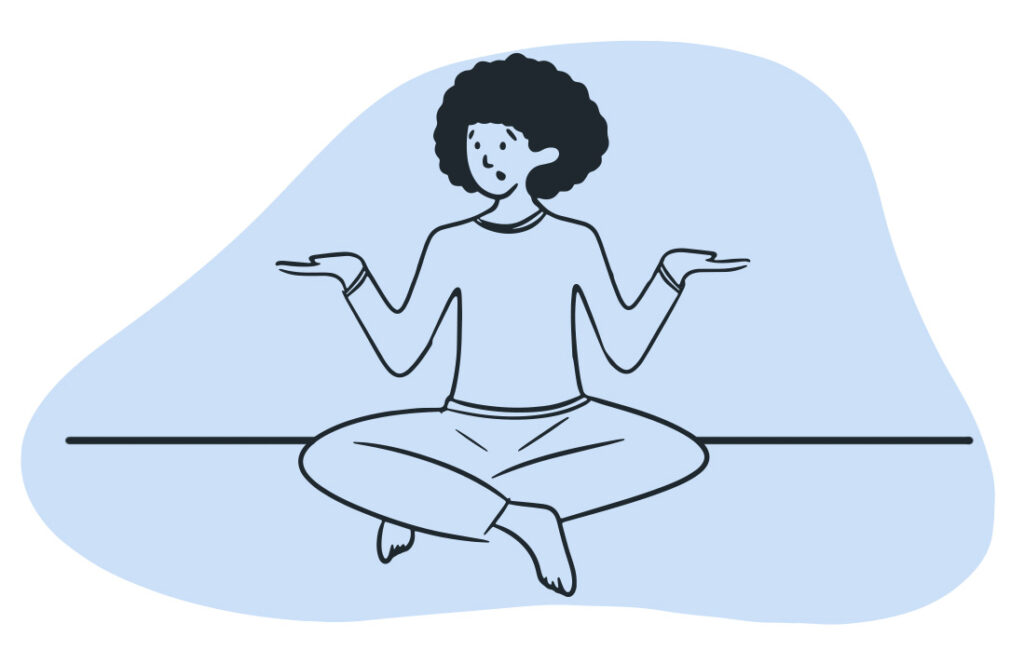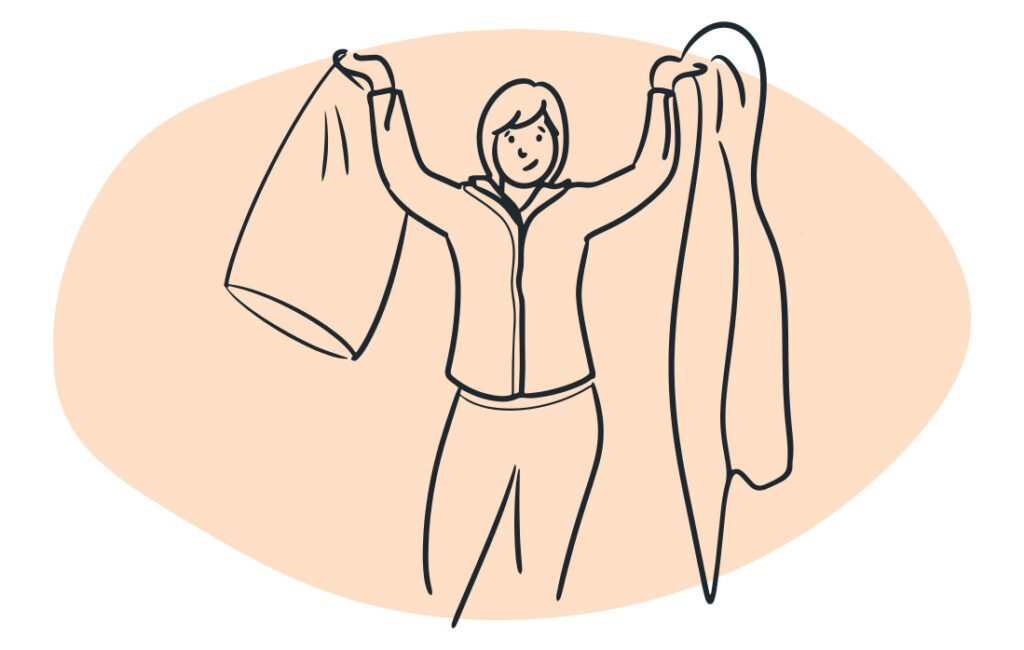Benefits Of Sleeping On The Floor
Disclosure: By clicking on the product links in this article, Mattress Nerd may receive a commission fee at no cost to you, the reader. Read full disclosure statement.
Many cultures sleep on the floor each night. Reasons for this are related to tradition and functionality, but there are also potential health benefits.
Should you make the move to the floor?
Read further to find out what’s best for you and your health.
What to Know About Sleeping on the Floor
Sleeping on the floor takes some planning. Where and how you decide to hit the ground sleeping takes some consideration. Some factors to consider are the following:
- bed: blankets, mattress, or mat
- spot: carpet, hardwood floor, or tile
- pillow: no pillow or pillow, and how many
- sleep position: back, stomach, or side sleeper
Sleeping in an elevated bed may be typical in Western countries like the United States, but many Asian and African cultures favor sleeping on the floor. Sleeping on the floor is an individual choice some make for various reasons.
These reasons include the following:
- You’re sleeping at a friend’s house with no other option.
- It helps relieve back pain.
- The floor is a cooler temperature place to rest.
- One can’t afford a bed.
- You feel safer on the floor.
- Your home needs more space to accommodate a bed.
- You want to improve your posture.
Whatever the reason, it’s best to consider the pros and cons of sleeping on the floor before making a move. Plus, it never hurts to check with a doctor for any potential health issues.

Pros and Cons of Sleeping on the Floor
The motivation for floor sleeping varies per person. But if the advantages outweigh its disadvantages, it might be worth a try.
Benefits of Sleeping on the Floor
Cooler Sleep Temperature
Many cultures sleep on the floor since cold floors quickly remove body heat. Sleeping in a cooler temperature also enhances the quality of sleep. A colder body temperature allows you to move through the stages of sleep efficiently with fewer chances of disruption. According to research, an optimal room temperature for sleeping is around 60 to 65 degrees F (15 to 18 degrees C).
Humidity is also a consideration. An older study showed a high-humidity sleep environment affects how your body regulates temperature and may disrupt your slumber. Sleeping on the floor may help lessen the effects of humidity that disrupt your sleep or worsens sleep disorders like obstructive sleep apnea (OSA).
Back Pain Relief
Experiencing back pain at night might interrupt your sleep. Medical experts’ opinions on the best mattress firmness for back pain are still up for debate.
One study found that a medium-firm mattress offered more benefits for back pain. But others feel that the firmer the bed, the better it can manage discomfort.
So, sleeping on a hard and flat surface might relieve your back pain. You may also move your mattress to the floor to help with aches.
Improves Posture
Maintaining good posture helps to:
- prevent injury
- better manage pain
- avoid other health concerns
To improve posture, you may adjust how you sleep. For example, static posture is how you hold yourself when you’re not moving, like when asleep.
A way to improve it is by ensuring you keep your shoulders aligned and your head leveled. So, sleeping flat on the floor may help better align your spine and boost posture.
Disadvantages of Sleeping on the Floor
Before hitting the floor, let’s examine how it may also cause harm.
Allergies
Allergies occur when your immune system overreacts to foreign substances called allergens. You may find common allergens on the floors of your home, like:
- dust mites
- pet hair and dander
- cockroaches and other insects
- mold
Floor sleeping might lead to increased contact with these allergens versus sleeping on an elevated bed. As a result, you may experience skin irritation and trouble breathing.
Pain and stiffness
Sleeping on the floor offers little to no support to your spine and joints. The conflicting opinion among some experts say resting on a hard surface worsens back pain and leads to other problems.
For example, a pressure ulcer is a skin injury from constant pressure. Sleeping on a hard floor may lead to skin breakdown, pain, and infection, where parts of the skin meet the hard surface. A supportive mattress can help prevent this from occurring.
Floor sleeping may prevent you from properly aligning the spine, especially if you sleep on your side. You may require pillows to help correctly position your legs, hips, and head to maintain proper alignment and avoid injury.
Too Cold
It’s best to sleep in a cooler room as long as you don’t become too cold. Like too much heat, a low body temperature may disrupt your sleep. So, the discomfort of feeling too cold might make falling asleep more challenging.
Try sleeping on a blanket or mat to prevent losing too much heat. Also, a heated floor might help.
Not Ideal for Older Adults
As we age, our body’s ability to regulate its temperature declines. Chronic health conditions like diabetes further exacerbate it. Other ways floor sleeping is harder on older adults are:
- Increased risk for skin injury. Poor temperature regulation may lead to sweating and heat stress which can cause harm to the body, including skin ulcers and damage.
- Higher risk for fractures. Osteoporosis is a major cause of fractures in postmenopausal and older people. So, sleeping on a hard floor may easily fracture a bone due to its low density.
- Limited mobility. Some older adults experience difficulty getting down on the ground and climbing up. This strain may cause injury.
Is Sleeping on the Floor Good For Your Back?
The jury is still out on this one. But, some people may anecdotally report it helps their back pain, while others do not. The key may be how you sleep on the floor.
Maintaining a spinal neutral alignment while sleeping on the floor is crucial. So, if you’re a side sleeper, experts suggest that you assume the fetal position to open up the spine’s joints and reduce the spine’s curvature.
Also, consider your pressure points or where your body makes contact with the floor. It might be helpful to cushion the bony prominences like your hips and elbows with a thin pillow, mat, or mattress topper to prevent injury and discomfort.
A good pillow may also be helpful. It might help you maintain better spinal alignment and support to avoid injury and stiffness.

How to Sleep on the Floor
If you’re ready to try sleeping on the floor, here are some steps to get started:
- Ensure your spot is free from clutter.
- Test out a blanket versus a mat or sleeping bag on the floor. Feel free to use multiple layers if desired.
- Use a thin pillow instead of a thick one or more than one under your head to avoid neck strain.
- Try different positions to see what feels the best. Also, consider a pillow underneath your knees if you sleep on your back or stomach for more support. The pillow goes between your knees if side sleeping.
- To prevent injury, try napping on the floor first. That way, you can see if it causes discomfort or if you have trouble falling asleep. Or try first sleeping on the floor for only two hours a night. Then, slowly increase the time spent over the next couple of weeks.
Final Thoughts
Many people all over the world sleep on the floor every night. It’s best to consider how its benefits weigh against the disadvantages for you. Things such as age, health conditions, and environment are a consideration.
Practicing good sleep hygiene and speaking with your doctor might be an easier way to improve your sleep before considering the floor.
Sources
Allergens. (2022). https://www.niehs.nih.gov/health/topics/agents/allergens/index.cfm
Bhattacharya S, et al. (2019). Pressure ulcers: Current understanding and newer modalities of treatment. https://www.thieme-connect.com/products/ejournals/pdf/10.4103/0970-0358.155260.pdf
Caggiari G, et al. (2021). What type of mattress should be chosen to avoid back pain and improve sleep quality? Review of the literature. https://www.ncbi.nlm.nih.gov/pmc/articles/PMC8655046/
Guide to good posture. (2017). https://medlineplus.gov/guidetogoodposture.html
Harding E, et al. (2019). The temperature dependence of sleep. https://www.frontiersin.org/articles/10.3389/fnins.2019.00336/full
Kenny G, et al. (2016). Body temperature regulation in diabetes. https://www.ncbi.nlm.nih.gov/pmc/articles/PMC4861190/
Lappharat S, et al. (2018). Effects of bedroom environmental conditions on the severity of obstructive sleep apnea. https://jcsm.aasm.org/doi/full/10.5664/jcsm.7046
Low back pain fact sheet. (2022). https://www.ninds.nih.gov/low-back-pain-fact-sheet#3102_8
Okamoto-Mizuno K, et al. (2012). Effects of thermal environment on sleep and circadian rhythm. https://www.ncbi.nlm.nih.gov/pmc/articles/PMC3427038/
Osteoporosis overview. (2019). https://www.bones.nih.gov/health-info/bone/osteoporosis/overview